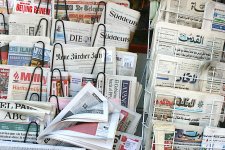I missed out on film althogether, apart from a pocket 110 camera when I was a lad. I used to love the anticipation of taking a used film cartridge out of that camera, popping it in the envelope, with a cheque or postal order. Then the wait for it to come back, 7-10 days I think it was.
For what it was, it took me some decent photographs.
I lost interest though, fast cars and girls becoming my thing.

So we move on to 2003. My Brother in law loaned me a digital compact. I took some photos of my dog at the time and some flowers. That was it, I was hooked. I went and bought a Canon Powershot A40, all 2.1 mp of it. I loved that camera though. Still have it, in mint condition, fully working.
I say 'hooked', I was but it never really took off for me until about 2012, when I moved onto DSLRs.
I did buy a Canon EOS500 a while ago. It's very similar to my Canon DSLRs, although it is film. Even my EF lenses will work on it. I love the challenge of film but I've only put 1 1/2 rolls through it so far, I'm not sure my remaining film is any good as it's over 3 years old. I take my film camera with me on landscape outings, but they are few and far between atm.
I digress a little, this is more how my journey has unfolded but 2003 was the year I discovered digital photography and that camera was good enough for me and what I was doing and my level at the time. As I progressed though, I wanted more and my purchase of a 40D, was when I subconsiously accepted digital as the go to format. The 40D was a very nice camera. with a lovely sensor too.


 That was the reason I also got a 1Gb Microdrive, for £150.
That was the reason I also got a 1Gb Microdrive, for £150. 